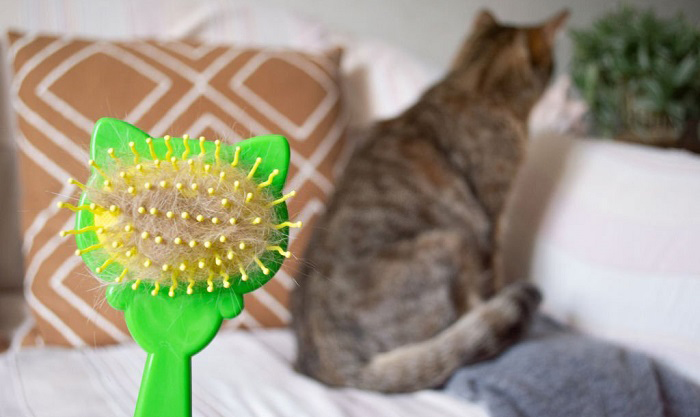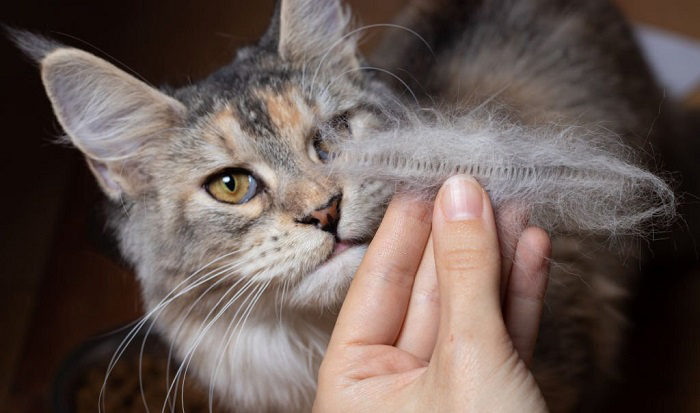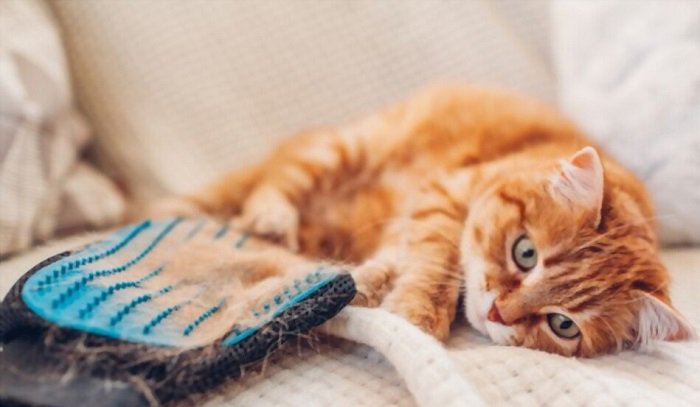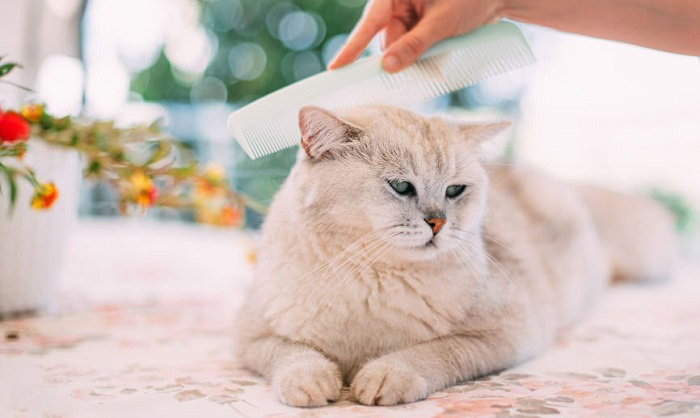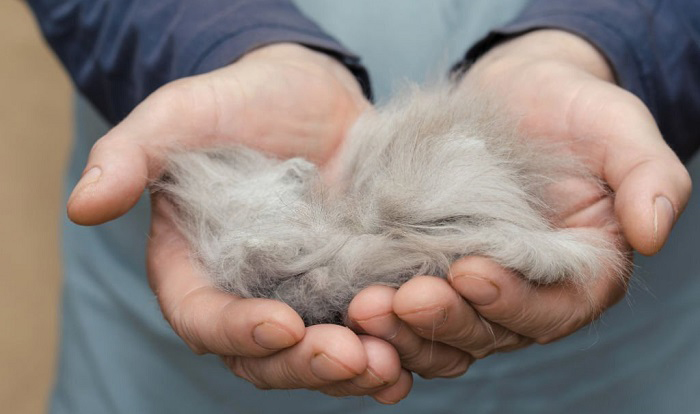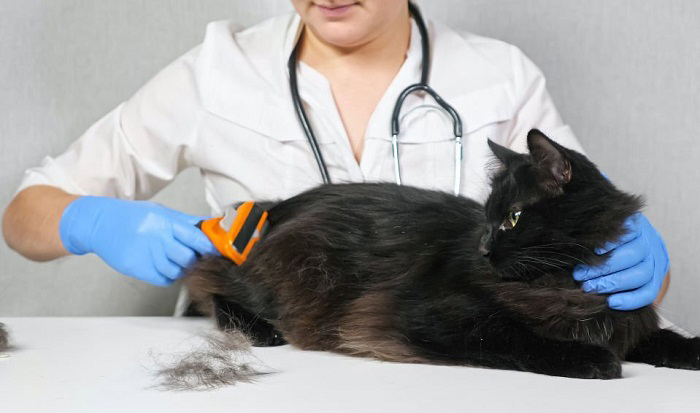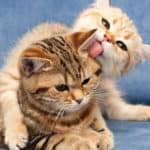As much as we love cuddling with our cats, their shedding can be a problem. You probably have asked yourself, “why is my cat shedding so much?” From age, low quality food, and stress to health issues, these are common reasons for this pattern.
Your feline friend sheds daily, but you may ask, “is it normal?” It is. They may lose their fur, but eventually, it grows back. Excessive shedding, on the other hand, is not normal. This usually happens once or twice a year only.
But of course, it varies depending on several factors. This includes the shedding pattern of your pet. Below are the most usual causes:
Table of Contents
Reasons Why Cats Shed a Lot
1. Age
Upon reaching adolescence (6-12 months), kittens begin to shed their baby hair. This is the time their adult hair will grow.
But as they mature into adult cats, they don’t groom themselves as much anymore. In turn, this causes shedding.
2. Stress
Just like any animal, cats can be stressed under some conditions or environments. A cat’s muscles tend to tense up during times of stress. During these moments, follicles of some hairs called telogen hairs are released.
The release causes the cat shedding more than usual. This is why owners must be sensitive to stressful situations to address these.
3. Low-quality food
A cat shedding a lot can be attributed to having been fed poor-quality food. After all, the diet or nutrition of your cat has a direct effect on shedding. Nutrients are necessary to strengthen your pet’s hair coat and assist in growing fast.
4. Pregnancy
Like humans, hormonal changes and metabolic stress during gestation results in physical changes in your feline friends. One major change is the shedding of hair, specifically in the belly, as this is where the kittens will nurse.
5. Health Issues
Illnesses such as allergies, infection, and others will affect your cat’s fur and may cause shedding. Cats may be allergic to certain plants or trees and even home products like perfume and cleaning liquids.
Cats shed so much because of digestive issues as well like diarrhea, food allergies, arthritis, obesity, presence of parasites–both internal and external.
Seasonal Shedding
This occurs once or twice a year, usually in spring (like in February) and fall. The hours that your cat is exposed to daylight triggers the shedding.
In the fall season, cats shed their light summer coats. This makes way for the heavier coat to grow which they need in winter to keep themselves warm.
In the summer, the winter coat that they have eventually falls out. Bear in mind that cats shed evenly throughout the year, so be wary if your cat shedding fur in clumps that may cause bald spots.
If this happens, consult with your veterinarian right away.
Cat Hair Shedding Solutions
While coming of age and pregnancies are inevitable, some of the possible causes of excessive shedding in cats can be addressed or minimized.
1. Daily brushing of fur
Using the appropriate tools, brush your cat’s fur oftentimes. But be careful as any aggressive movement can hurt your pet.
Be gentle, especially when you notice tangles in the coat. When you often brush, you reduce the formation of hairballs.
2. Occasionally bathing your cat
As cats often groom themselves, you don’t need to do so regularly. However, make sure you are using formulated shampoo. Other shampoo types may not be effective for the feline, especially in preventing shedding.
3. Check up on your cat
Observe if, all of a sudden, your cat changes its behavior. These can range from irritability to restlessness. When stressed, it is best to take the time to figure out the causes so you can address them properly.
4. Be consistent with the diet
Feed your cat the appropriate food. Two ingredients can nurture a healthy growth of the hair coat. These are the following;
Protein-rich food – Cats need at least 26% protein in their diet. Those that come from animals are best for your feline friend. From turkey, chicken, and duck to flounder and whole herring, these are some of the meats your cat can eat.
Be careful when your cat has kidney disease. A high-protein diet makes it difficult to filter any excess. It is best to speak with your veterinarian in such cases.
Omega 3 and Omega 6 fatty acids – Receiving a balance of both acids help your pet maintain a beautiful coat growing from equally healthy skin. Omega 6 keeps the moisturize locked in within the skin while Omega 3 prevents inflammation.
5. Keep hydrated
Hydration will help in keeping the cat’s coat healthy. When the animal lacks moisture internally, then its fur dries out. In turn, the strands become brittle and prone to damage and falling out.
6. Keep pet healthy
Ensure that your pet cat is free from ticks, parasites, and other health issues. It is essential to regularly visit the veterinarian even when your cat is not visibly sick.
7. Visit a groomer
Set an appointment with a professional groomer if you are having difficulties taking care of your pet’s shedding. Experts know how to deal with the issue, minimizing your stress. After all, they already have the tools and the expertise to handle it.
Frequently Asked Questions
What is the difference between fur and hair?
You may be wondering if there is any difference between these two terms. “Fur” is the clumped-up hair, while “hair” is the strands making up the fur.
Apart from fur and hair, there is also the term “coat.” Veterinarians usually refer to the collective hair.
Is dander the same with fur?
A common misconception is that a cat’s fur causes allergies. However, it is a cat’s saliva that is the reason. As felines need to groom themselves, a particular particle from their saliva transfers to their body.
Once it dries, it turns into “dander” or the tiny flakes unseen by the naked eye. However, dander is also in the air and other objects with hair. This includes carpets, rugs, curtains, and bedding.
What are the layers of cat fur?
A cat’s coat differs among breeds. This includes the length, texture, volume, and straightness. Cats can have up to three types of coats.
At the base of a cat’s fur are the awn hairs. These are the closest to the epidermis, the ones that make up the basic coat of the feline.
After the awn hairs, there are stiff guard hairs. The length is equal to awn, but for certain breeds, the guard is a bit longer. No matter the length, its main purposes are to reveal the cat’s true color and to keep the animal dry.
Next is the undercoat. This is the part that provides warmth to the cat’s body. While this coat is soft, it can get all tangled up when not run through a brush regularly. In some breeds like the Persian, a matted undercoat can be a problem.
Lastly, there is the vellus. For breeds like the Sphynx, these are light-colored, fine hairs.
Conclusion
“Why is my cat shedding so much?” is a question many owners have asked, including “what does it mean?” It is quite troublesome to deal with, especially when the fur accumulates everywhere at home.
Be it due to stress, poor diet, medical issues, or a shedding season, there are many ways this can be dealt with.
Regular brushing is at the top of effective ways. But if you are unable to do this, you can always ask for the help of a veterinarian or professional groomer.

I am Amy Sawy, a Doctor of Veterinary Medicine (DVM) graduate from the University of Kansas. y husband, Dr. Plummer, and I own a veterinary clinic in Phillipsburg, Kansas. In addition to my professional background, I am a devoted pet owner myself, with a household that includes dogs, rodents, and most notably, cats – a total of five felines in my home.
In 2020, I joined an organization as a professional writer, leveraging my experience and collaborating with my team to deliver the most valuable information for your cat’s care.


